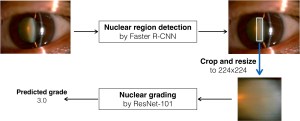Our ICMR’20 paper on interactive image captioning is online.
In this paper we study a brand new topic of interactive image captioning with human in the loop. Different from automated image captioning where a given test image is the sole input in the inference stage, we have access to both the test image and a sequence of (incomplete) user-input sentences in the interactive scenario. We formulate the problem as Visually Conditioned Sentence Completion (VCSC). For VCSC, we propose ABD-Cap, asynchronous bidirectional decoding for image caption completion. With ABD-Cap as the core module, we build iCap, a web-based interactive image captioning system capable of predicting new text with respect to live input from a user. A number of experiments covering both automated evaluations and real user studies show the viability of our proposals.

You must be logged in to post a comment.